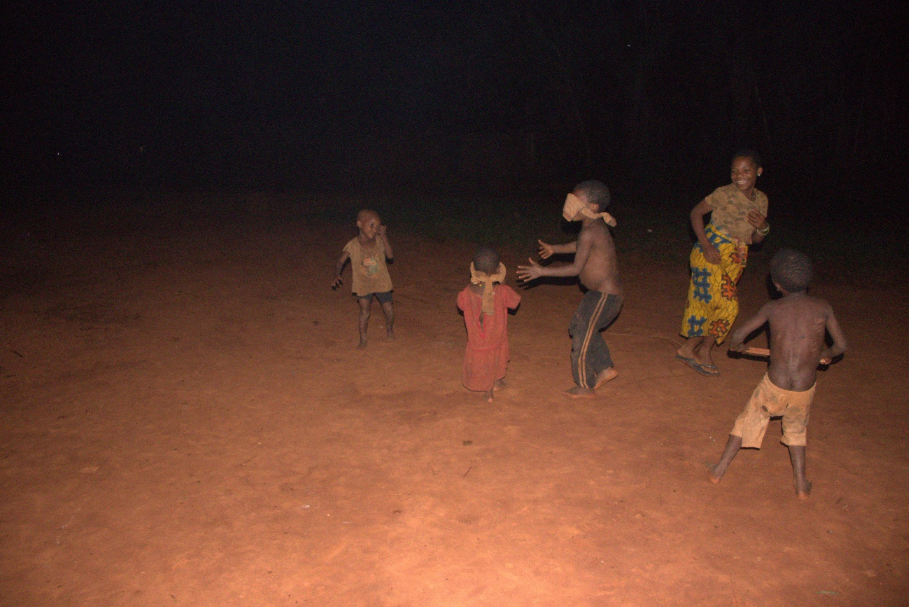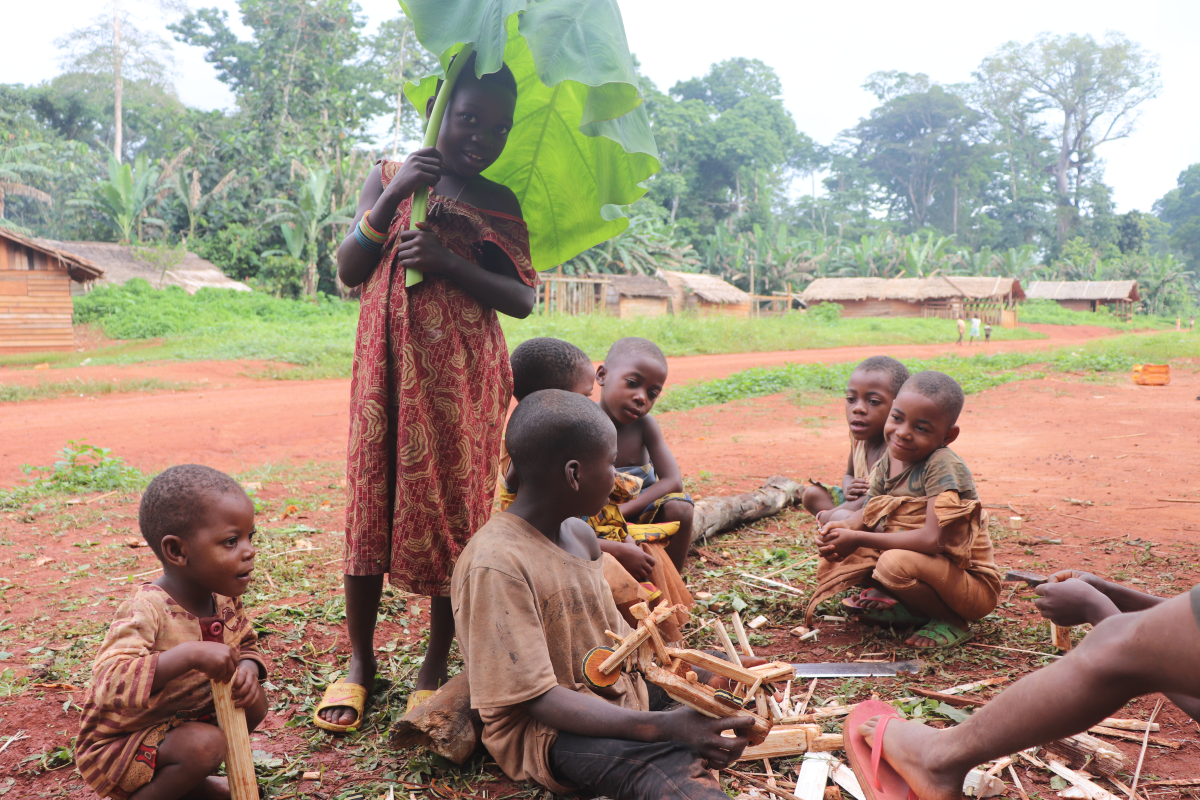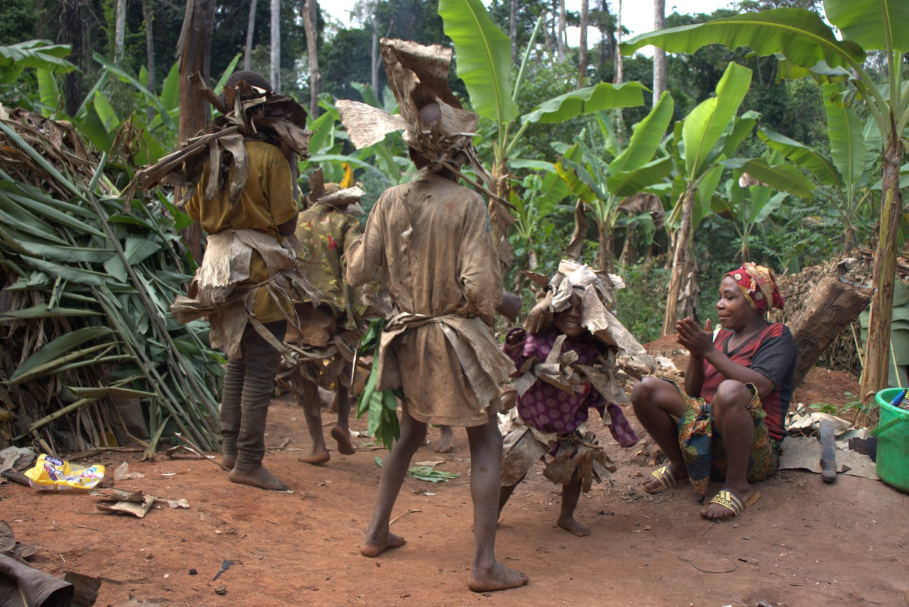Report on the Dispatch to Cameroon: A survey of Baka hunter-gatherer children using the focal sampling method
Kyoto University
Graduate School of Asian and African Area Studies
Division of African Area Studies
Tanaka Ayana
Dispatch Period: 11th February 2023−25th July 2023
Destination of Dispatch: Tropical Rainforest Area, Southeast Province, Cameroon
Keywords: Parenting, Attachment, Enculturation, Socialization
1. Research topic
This research is part of the Scientific Research (S) (PI: Akira Takada) ” Ecological future making of childrearing in contact zones between hunter-gatherers and agro-pastoralists in Africa” and aims to clarify to whom young children of the Central African hunter-gatherer Baka form attachments, participate in group activities, and acquire characteristic Baka behaviors in a culture of multiple caregivers.
2. Content of the survey
This study aimed to obtain quantitative data on the behavior of young children and caregivers among the Central African hunter-gatherer Baka. All 23 young children aged 0-4 years living in the settlement were observed for 20 hours per child (including a 12-minute break every hour). Focal sampling was used to record the presence or absence of behaviors, using 30 seconds as the observation unit. Behavior categories were based on items from Takada’s (2010, 2014) study of the !Xun hunter-gatherers of southern Africa. Child behavior items were related to group play activities, movement, vocalizations and facial expressions, sleep, eating, and attachment behaviors, and caregiver care items were related to vocalizations and facial expressions, physical contact, expressions of affection, breastfeeding, and personal care. In addition, other surveys were conducted as needed for the analysis. These were: 1) a survey of the demographics of all villagers, 2) interviews about child rearing, 3) a survey of nomadic life (recording which river in the forest all villagers went camping and with whom), and 4) a video recording of lullabies commonly heard in Baka.
3. Focal sampling survey

Smartphones were used as the recording medium for this survey. Since there was no electricity in the study sites, solar panels (50W×2) were brought from Japan. Since it is difficult for sunlight to reach the rainforest, there was a concern about whether the solar panels would work. However, in the villages along the logging roads, it was possible to charge computers and smartphones daily. On rainy days, it was better to hold the smartphone in one hand and record data under an umbrella than on paper. And because Baka walked steadily through forests and fields, the smartphone was easy to use as it is small and compact. However, due to the continued use of the smartphone, my eyes got sore and my shoulder become quite stiff during my time in the rainforest. In order to avoid distracting the Baka, who are sensitive to sound, the sports timer I had used to indicate the 30-second interval which was attached to my waist, was set on vibrate. However, some of the Baka noticed the faint vibrating sound and mimicked it by saying “boo boo” aloud and laughed at me by saying, “It’s a kokoyoko (toad in the Baka language)”.
4. Dispatch experience
I could do the survey in good health without getting infected with malaria or typhoid. However, in one incident that occurred during my field trip, I had a tingling pain in one of my arms. When I showed it to the Baka people, they told me that I had larvae in my arm. Then, several men and women took turns pinching my arm to try to push the larvae out. About a week later, when I peeled off the scab, I saw a white larva coming out of my arm. I picked the larva up with tweezers and removed it. I took a picture of the larva, did an image search, and thought it might be a fly larva. It is said that the larvae emerge to the surface of the skin when oxygen is scarce, so it is a good idea to plug the breathing holes with Vaseline. My scabs covered the small breathing holes, and the larvae probably emerged shortly after the scabs were removed.
5. Issues for future dispatch
In this survey, I collected quantitative data in village and field camps. Since the Baka often go into the forest and stay there for a considerable time, obtaining data from the forest camps would be the next task of investigation.


≪References≫
Takada, A. 2010. Changes in Developmental Trends of Caregiver-Child Interactions among the San: Evidence from the !Xun of Northern Namibia. African Study Monographs 40: 155-177. Takada, A. 2014. Kinship and Caregiving Practices among the Ekoka !Xun. In A. Barnard, & G. Boden eds., Southern African Khoisan Kinship Systems. Research in Khoisan Studies Volume 30. Cologne, Germany: Ruediger Koeppe Verlag Koeln, pp. 99-120.
